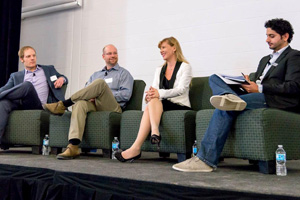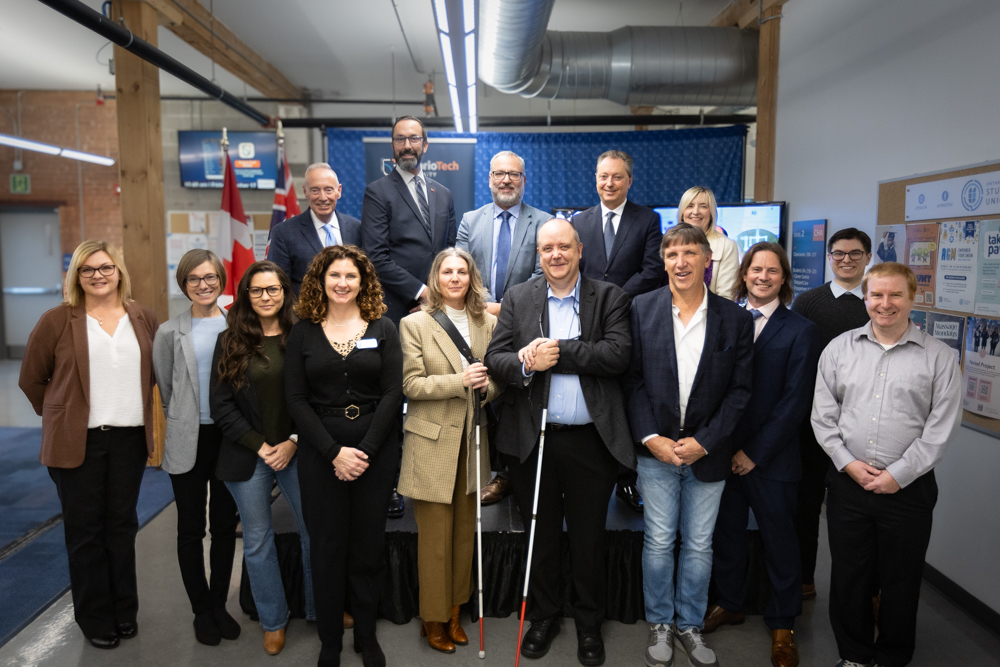UOIT researcher discusses wearable technologies in health care at MaRs
March 31, 2014

While the shift from carryables like smartphones to wearable technology is already happening, now is the opportunity to stop and ask what we’re doing with the technology and how consumers can be protected.
That was the message communicated by Dr. Isabel Pedersen, Canada Research Chair in Digital Life, Media, and Culture and Director of the University of Ontario Institute of Technology’s (UOIT) Digital Culture and Media Lab (DecimaL), at a recent panel discussing the growing use of wearable technology in health care.
The discussion was part of the Wearable Wednesday Toronto (WWTO) – Health Edition event held at MaRS Centre in Toronto, Ontario on March 26. Wearable Wednesday is a monthly meetup that celebrates and discusses the growing wearable technology space. Wearables are small electronic devices embedded into items that attach to a part of the user’s body and collect or output data.
At the meeting, participants networked and discussed the future of wearable health technologies. According to a MaRS Market Insights white paper recently released by MaRS and WWTO, wearables are expected to play an important role in medical applications such as health and fitness. Wearables startups raised more than $450 million in capital in 2013. The market opportunity for this is expected to top $30 billion by 2018, with health and fitness making up more than 20 per cent of the total.
Despite all of the innovation happening on the wearable technology front, precautions still need to be taken. “The reality is that we are transitioning to wearables and implantables,” said Dr. Pedersen. “But during this transition, we have an opportunity to address how we went wrong with the smart phone culture.”
Privacy is one of the areas that will need to be addressed. “This is our chance to invent wearable devices in a way that will protect patients’ medical information,” she said.
She also urged the audience to consider ways in which wearable technology can be developed so that it strengthens bonds and social interaction between humans, rather than creating distance between them. Wearable health technology has the potential to democratize health care, giving patients the ability to monitor things like glucose levels or their pulse. “The momentum is moving toward do-it-yourself medicine, rather than being used by doctors and patients to communicate with each other,” she explained. “But research shows that we encounter a lot of problems if human interaction is removed from that equation.”
A better approach would be to develop wearables that enable doctors and patients to make medical decisions together. For example, in the situation of an elderly woman who breaks her hip and must decide what kind of surgery to have, the doctor on call could pull up the information on the patient’s medical device, determine how fit and healthy she is, and then decide with the patient what the next steps should be.
“This allows the patient and doctor to connect and built trust between each other, which is much better than overwhelming patients with wearables and placing all of the onus on them to make their own medical decisions,” she said.
The discussion was moderated by Hadi Salah, Senior Industry Analyst, MaRS Market Intelligence. Panelists also included:
- Code Cubitt, Managing Director, Mistral Venture Partners
- Jesse Slade Shantz, Chief Medical Officer, OMsignal
Kitchener, Ontario-based startup Thalmic Labs presented and demonstrated its gesture-controlled armband, Myo, which is poised to change the way consumers interact with smart devices around them.
Attendees also had a chance to visit the Wearables Innovation Showcase, where startups demonstrated their technology and answer questions. The showcase featured products from:
- Engage Biomechanics
- Kiwi Wearable Tech
- OM Signal
- Personal Neuro
- Push Design Solutions Inc.
- Thalmic Labs
- The MeU
- The Social Body Lab



